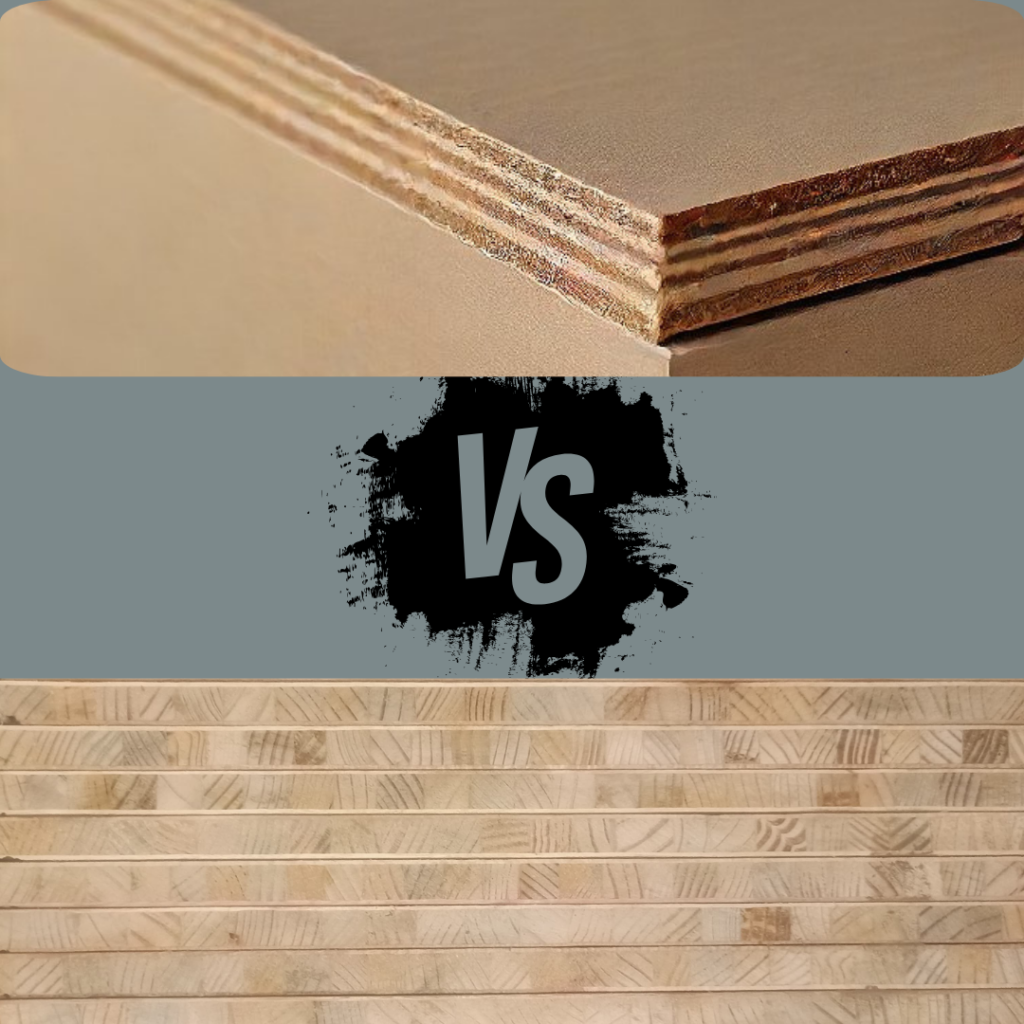
Building furniture is all about choosing the right materials for the job. When it comes to frames, carcasses, and shelves, two popular options are plywood and blockboard. But what are the key differences, and which one should you use? This blog post will break it down for you.
Understanding Plywood
Plywood is a versatile and widely used sheet material made from thin layers of wood veneer glued together with the grain of each layer running perpendicular to the adjacent layer. This cross-grain construction creates a strong, stable, and dimensionally consistent material. Plywood comes in a variety of grades, thicknesses, and wood types, making it suitable for a wide range of applications.
Pros of Plywood for Frames, Carcasses, and Shelves:
- Strength and Stability: Plywood offers excellent strength and stiffness, making it ideal for load-bearing applications like shelves and cabinet carcasses.
- Moisture Resistance: Certain grades of plywood, like marine-grade plywood, are treated for moisture resistance, making them suitable for humid environments like kitchens and bathrooms.
- Versatility: Plywood comes in a wide variety of thicknesses, allowing you to choose the right option for your project’s needs.
- Paintable and Finishable: Plywood takes paint and other finishes well, making it easy to customize the look of your furniture.
Cons of Plywood for Frames, Carcasses, and Shelves:
- Weight: Plywood can be heavy, especially in thicker sheets. This can be a consideration for larger projects.
- Edge Splintering: Plywood edges can be prone to splintering, requiring additional finishing work.
Understanding Blockboard
Blockboard is a wood panel construction material similar to plywood. However, instead of solid wood veneers throughout, blockboard has a core made of solid wood strips sandwiched between thin wood veneers on both sides. This construction offers some advantages over plywood.
Pros of Blockboard for Frames, Carcasses, and Shelves:
- Lighter Weight: Blockboard’s core construction makes it lighter than plywood of the same thickness, making it easier to handle and work with.
- Machinability: Blockboard cuts and drills cleanly with minimal chipping or splintering.
- Stiffness: Blockboard offers good overall stiffness, making it suitable for long shelves or panels that need to resist bending.
Cons of Blockboard for Frames, Carcasses, and Shelves:
- Lower Strength: Blockboard generally has lower strength compared to plywood, especially for holding heavy loads.
- Moisture Susceptibility: Blockboard’s core is more susceptible to moisture damage than plywood, limiting its use in humid environments.
- Limited Availability: Blockboard may not be as readily available as plywood in all regions.
So, Which One Should You Choose?
The best choice between plywood and blockboard depends on your specific project requirements:
- For strong, load-bearing shelves and carcasses, especially in potentially humid environments, plywood is the better option.
- For lightweight shelves, panels, or frames that need good machinability and a smooth finish, blockboard can be a good choice, as long as weight-bearing capacity is not a major concern.
Here’s a quick table to summarize the key differences:
| Feature | Plywood | Blockboard |
|---|---|---|
| Construction | Veneers throughout | Solid core, veneer faces |
| Strength | Higher | Lower |
| Moisture Resistance | Varies by grade | Lower |
| Weight | Heavier | Lighter |
| Machinability | More prone to splintering | Less prone to splintering |
| Availability | Widely available | Less available |
By understanding the strengths and weaknesses of both plywood and blockboard, you can make an informed decision and choose the right material for your next furniture project.
